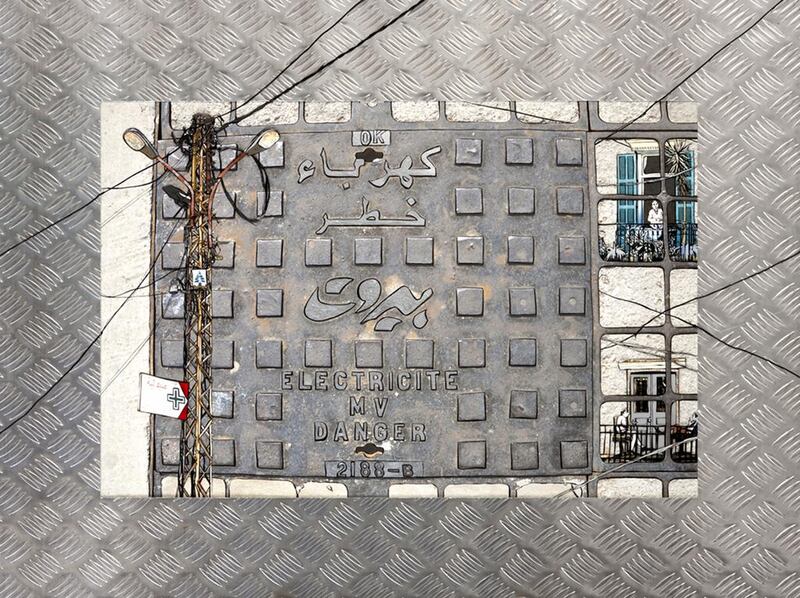The lady of Lebanon stands on a hill, backed by blue Plexiglas and reflected from across the gallery by three garage mirrors overlaid with peacocks and evil eye emblems. Welcome to Khosh Bosh, a solo exhibition by the British artist Hatty Pedder, who has captured the sights, sounds and essence of Beirut in a mixed media collection of art.
Beyrouth
Depicted as a female form in many of her art works, the city of Beirut is full of contradictions. In one image, Pedder has taken vintage newspapers and history books to form the base of the painting, with a woman in the centre who is wearing a cape made out of modern clippings. “I wanted to show the contrast between the vintage and the contemporary,” explains Pedder. “There is so much of that side by side in Beirut.”
Talfizions and Telifons
Some pieces are made using replica aluminium drain covers on which Pedder has attached silver foil, Arabic lettering and illustrated characters. “I feel this is more conceptual than my other shows,” says Pedder. “I have used materials such as aluminium to develop different ideas.”
The pieces emulate the televisions that are constantly blaring across the Lebanese capital and the spaghetti mesh of electricity wire, as well as characterising the many different kinds of people that Pedder encountered during her trips. She has named them after the Arabic slang terms for television and telephone – “talfizion” and “telifon”.
Khalil Gibran
The writings and personality of Khalil Gibran make up a central piece of the show, where Pedder has placed his portrait in three sun-shaped frames and written poems from The Prophet, Gibran’s famous book in English, French and Arabic, on the fronds of the frames.
“Everyone in the region can relate to Gibran and it is so multicultural so it reflects the nature of the city itself,” says Pedder.
Khosh Bosh
The name of the exhibition comes from urban street slang that means to have a close relationship without inhibitions or protocol. Basically, it’s an informal way of establishing an understanding of having no commitments. “It could be a state of closeness and openness,” says Pedder. “It is the way a lot of people feel about Beirut itself.”
This is Pedder’s third solo show in the gallery and the third time that she has taken a city and tried to encapsulate it in images. “I love to go to different cities and produce collections based on those cities,” she says. “I had never been to Beirut before I started this collection, but now I am in love with the place.
Cedar tree
Look closely and the cedar tree, which is a symbol of Lebanon and part of the everyday culture, appears in a few of the works. The omnipresent electric wires also work their way into many corners, as does a fair amount of “glitz”, which Pedder says exemplifies the city life. Her work is montaged and layered, and whether she is making references to religion, food or popular culture, there are elements from all walks of life in the context of her work.
“I think it is a very positive series,” she says. “It is really presenting my experience and different aspects that I saw there, and I hope the people of Lebanon as well as everyone in the region will enjoy it.”
• Khosh Bosh runs until October 30 at the Mojo Gallery, Alserkal Avenue in Dubai
aseaman@thenational.ae





